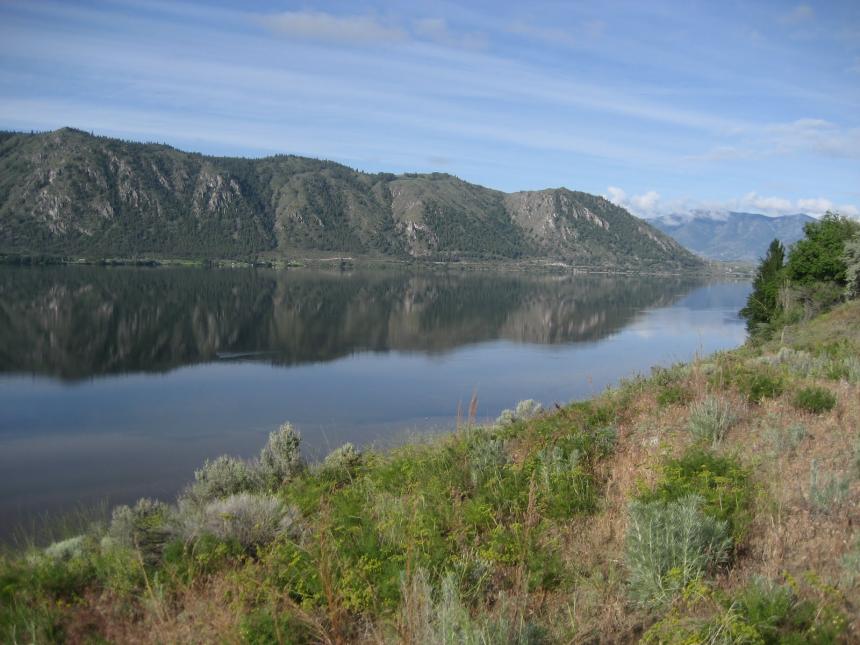Located upstream of Wells Dam, this twenty (20) mile long reservoir contains a variety of fish species, but it noted for Steelhead, Chinook salmon, and Sockeye salmon fisheries. Seasons for these species are based on abundance of fish runs and can be located either in the WDFW fishing pamphlet or by searching the WDFW website for fishery rule changes. Largemouth Bass, Smallmouth bass and Walleye are also available.
Two-pole fishing is allowed
Shoreline access: Good - There are many public access areas along this stretch of the Columbia River.
Species you might catch
- Bridgelip sucker
- Brown bullhead
- Bull trout
- Chinook salmon
- Chiselmouth
- Coho salmon
- Largemouth bass
- Northern pikeminnow
- Peamouth
- Pumpkinseed Sunfish
- Rainbow trout
- Redside shiner
- Signal crayfish
- Smallmouth bass
- Sockeye salmon
- Steelhead
- Tench
- Threespine stickleback
- Walleye
- Westslope cutthroat trout
- White sturgeon
- Yellow perch
Lake information
County: Douglas
Acreage: 8098.70 ac.
Elevation: 783 ft.
Center: 48.095239, -119.767055
Open in Google Maps
Catchable fish plants
| Stock Date | Species | Number Released | Number of Fish Per Pound | Facility |
|---|---|---|---|---|
Visit the Catchable Trout Plants page for a more detailed search of trout plants in this or other bodies of water. To view or download the source data for this table visit the WDFW Fish Plants dataset on the Washington State Open Data Portal
Fishing prospects calendar
Rainbow trout
Largemouth bass
Smallmouth bass
Walleye
Yellow perch
Pumpkinseed Sunfish
Brown bullhead
Northern pikeminnow
Photos
